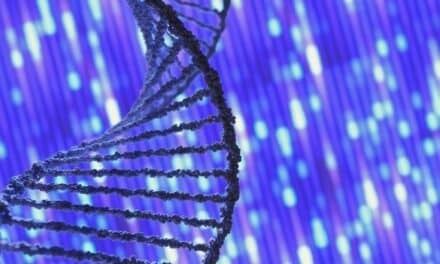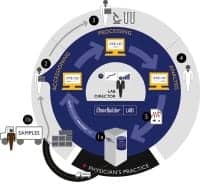New cancer diagnoses of eight common types of the disease (prostate, breast, colorectal, lung, pancreatic, cervical, gastric and esophageal) significantly declined during most of the first 13 months of the pandemic (March 2020-March 2021), according to a Health Trends study from Quest Diagnostics published in JAMA Network Open, Oncology. It is believed to be the largest and most comprehensive analysis of cancer diagnosis rates during the pandemic, according to the company.
The study “Changes in Newly Identified Cancer Among U.S. Patients from Before COVID-19 Through the First Full Year of the Pandemic” is an analysis of Quest Diagnostics de-identified laboratory data from 799,496 patients with diagnoses of cancer during four-time periods defined to allow for comparison during different phases of the pandemic: pre-pandemic (January 2019 to February 2020), pandemic period 1 (March to May 2020), pandemic period 2 (June to October 2020), and pandemic period 3 (November 2020 to March 2021). It builds on research the Quest team published in August 2020 in JAMA Network Open that found a 46.4% decline in newly diagnosed cases of six cancers from March 1 to April 18, 2020. The new analysis, expanded to include two additional cancers, indicates that the double-digit declines in cancer diagnoses observed during the early weeks of the pandemic continued, although less dramatically, through much of 2020 and the first three months of 2021 as compared to before the pandemic was officially declared in March 2020.
The findings suggest that many individuals failed to receive preventive or other forms of medical care, such as routine screenings, that could have resulted in diagnosis of cancer during the first year of the pandemic, even though restrictions to travel and healthcare services generally lifted by Summer 2020. Cancer may not cause symptoms in early stages, and patients may be unaware that they have the disease without evaluation and testing. Delayed cancer diagnosis can lead to more advanced disease, more aggressive and costly treatment, and worse outcomes.
These three pandemic periods correlate with the winter and summer season months when COVID-19 cases were at their highest rates. Even when travel and healthcare service access resumed, many Americans continued to avoid in-person healthcare appointments due to fear of exposure.
“The significant decline in cancer diagnoses revealed by our Health Trends analysis raises the concern that more Americans are living with undiagnosed cancers because of the pandemic,” says Yuri Fesko, MD, medical director, Quest Diagnostics Oncology. “In the past years, we’ve made so many therapeutic advances in cancer care, but if a cancer is not diagnosed, we can’t treat it. That’s why it’s important that patients engage in regular preventive care, including cancer tests and screenings, so that they have the best outcomes possible.”
Cancer Diagnoses by the Numbers
The investigators examined the mean monthly number of cancer diagnoses versus the pre-pandemic period to provide averages per period. They also evaluated ICD-10 medical diagnostic codes to establish if prior service (screening, diagnostic test or treatment) for cancer had occurred to identify if the diagnosis was new.
Among the key findings:
- From March through May 2020, the monthly number of new diagnoses fell 29.8% for the 8 cancer types: breast, colorectal, lung, pancreatic, cervical, gastric, esophageal, and prostate. Declines were significant for all cancer types, ranging from breast (36.1%).to pancreatic (21.2%)
- From June through October 2020, the monthly number of new diagnoses fell 9.6%, statistically the same level as pre-pandemic for all cancers except prostate
- From November 2020 through March 2021, the number of new cancer diagnoses fell 19.1%
“Early screening, diagnosis and treatment for cancer is critical to achieving the most favorable outcomes. Due to gaps in care throughout the pandemic, we can expect a future wave of patients presenting with cancer at more advanced stages of disease,” says Harvey W. Kaufman, MD, senior medical director, head of the Health Trends Research Program for Quest Diagnostics. “Many of these patients, unfortunately, can expect more aggressive therapy and care with less favorable outcomes. We hope our study highlights the critical need for Americans to get back to their doctors and seek preventive and other forms of medical care without delay, so that potential cancers and other medical concerns are detected and treated early, when the best outcomes are possible.”
One possible limitation of the study is lack of demographic data on the patients, such as race/ethnicity or their access to care. However, Health Trends research published in January 2021 by Quest Diagnostics found that one in two White Americans (49%) surveyed in November 2020 were more likely to have seen a doctor for any form of preventive care during the pandemic, as compared to one in three Hispanic/Latinx (32%) and Black (33%) Americans.





